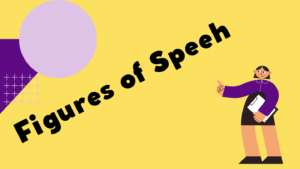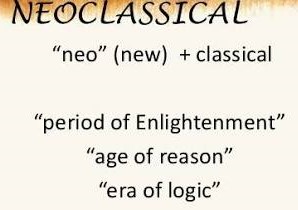Stanza-wise explanation of Keats’ La Belle Dame Sans Merci
“La Belle Dame Sans Merci” is a poem by Keats. It’s a ballad that tells the story of a knight who encounters a mysterious and alluring woman in the meadows. Here’s a stanza-wise explanation:

Stanza 1:
“Oh what can ail thee, knight-at-arms,
Alone and palely loitering?
The sedge has withered from the lake,
And no birds sing.”
Explanation
The poem begins with the speaker addressing the knight, questioning why he looks so troubled and lonely. The desolate imagery of withered sedge and silent birdsong sets a melancholic tone.
This opening stanza sets a desolate scene and introduces the main theme of the poem, which is the knight’s emotional and physical desolation. The knight’s condition is emphasized by the withered sedge and the absence of birdsong, reflecting his disconnectedness from the natural world. The repetition of “palely loitering” suggests a sense of aimlessness and melancholy, hinting at the knight’s internal turmoil.
Stanza 2
“Oh what can ail thee, knight-at-arms,
So haggard and so woe-begone?
The squirrel’s granary is full,
And the harvest’s done.”
Explanation
The speaker continues to ask the knight what is troubling him, noting his weary and sorrowful appearance. The mention of the abundant squirrel granary and completed harvest contrasts with the knight’s desolation, emphasizing his disconnectedness from the natural world.
In this stanza, the speaker continues to question the knight’s troubled state, contrasting it with the abundance of nature’s bounty. The reference to the full squirrel’s granary and the completed harvest highlights the knight’s alienation from the cycles of life and abundance, underscoring his sense of loss and despair.
Stanza 3
“I see a lily on thy brow,
With anguish moist and fever-dew,
And on thy cheeks a fading rose
Fast withereth too.”
Explanation
The speaker observes physical signs of distress on the knight’s face, describing a lily (symbolizing death) and a fading rose (symbolizing love and vitality). These images suggest that the knight is suffering greatly, both emotionally and physically.
The physical description of the knight’s appearance in this stanza serves as a metaphor for his inner anguish and decay. The imagery of the lily (a symbol of death) on his brow and the fading rose on his cheeks suggests that he is suffering both emotionally and physically. This reinforces the theme of mortality and the transient nature of beauty and love.
Stanza 4
“I met a lady in the meads,
Full beautiful—a faery’s child,
Her hair was long, her foot was light,
And her eyes were wild.”
Explanation
The knight begins to narrate his encounter with the mysterious lady in the meadows. He describes her as exceptionally beautiful, almost otherworldly, with long hair, a light step, and wild, captivating eyes. The imagery suggests an enchanting but possibly dangerous presence.
The introduction of the mysterious lady in this stanza adds an element of enchantment to the poem. The description of her as “full beautiful” and “a faery’s child” evokes a sense of otherworldly allure and danger. The wildness of her eyes suggests an untamed and unpredictable nature, foreshadowing the knight’s entrapment in her spell.
Stanza 5
“I made a garland for her head,
And bracelets too, and fragrant zone;
She looked at me as she did love,
And made sweet moan.”
Explanation
The knight recalls how he adorned the lady with gifts, creating a garland, bracelets, and a fragrant belt for her. Despite her alluring appearance and gestures of affection, there’s a sense of melancholy in her expression and sounds, hinted at by the phrase “sweet moan,” foreshadowing a darker turn in the narrative.
The knight’s actions in this stanza, crafting gifts for the lady, reveal his willingness to submit to her charms. However, the ambiguity in her response—”She looked at me as she did love, And made sweet moan”—hints at a deeper, possibly sinister, motive behind her affection. This reflects the theme of deception and the dangers of succumbing to superficial beauty.
Stanza 6
“I set her on my pacing steed,
And nothing else saw all day long,
For sidelong would she bend, and sing
A faery’s song.”
Explanation
The knight describes how he placed the lady on his horse and spent the entire day with her, completely enraptured by her presence and the enchanting melody of her song. This further emphasizes her bewitching nature and the hold she has over him.
The knight’s absorption in the lady’s presence is evident in this stanza, as he spends the entire day with her, oblivious to everything else. The repetition of “faery’s song” emphasizes the enchanting quality of her voice and reinforces the idea of her supernatural nature. This highlights the knight’s susceptibility to her influence and his increasing entrapment in her spell.
Stanza 7
“She found me roots of relish sweet,
And honey wild, and manna-dew,
And sure in language strange she said—
‘I love thee true’.”
Explanation
The lady provides the knight with food, using language that seems both enticing and unfamiliar to him. Her declaration of love is ambiguous, hinting at deeper, possibly sinister, intentions beneath her seductive facade.
The lady’s offering of food in this stanza can be interpreted as a symbol of temptation and seduction. The use of “language strange” suggests a sense of unfamiliarity and ambiguity in her declaration of love, hinting at ulterior motives. This underscores the theme of deception and the perilous nature of superficial affection.
Stanza 8
“She took me to her elfin grot,
And there she wept and sighed full sore,
And there I shut her wild, wild eyes
With kisses four.”
Explanation
The knight recounts how the lady led him to her magical cave, where she wept and sighed deeply. He then closed her eyes with kisses, suggesting a tender moment, but the repetition of “wild” emphasizes her untamed nature and the intensity of their encounter.
The imagery of the lady weeping and sighing in her “elfin grot” creates a sense of vulnerability and pathos, contrasting with her earlier seductive allure. The knight’s act of closing her eyes with kisses may symbolize his attempt to shield himself from her wild and unpredictable nature. However, it also suggests his complicity in the illusion she presents, highlighting his own vulnerability and desire for escape.
Stanza 9
“And there she lulled me asleep,
And there I dreamed—Ah! woe betide!—
The latest dream I ever dreamt
On the cold hill side.”
Explanation
The knight reveals that the lady lulled him to sleep in her grotto, where he experienced a troubling dream. The dream is described as a source of sorrow, hinting at a tragic outcome to their relationship.
The dream sequence in this stanza serves as a turning point in the poem, marking the beginning of the knight’s awakening to the true nature of his encounter with the lady. The phrase “woe betide” foreshadows the tragic outcome of his entanglement with her, signaling impending danger and despair. This underscores the theme of deception and the consequences of succumbing to false promises of love and enchantment.
Stanza 10
“I saw pale kings and princes too,
Pale warriors, death-pale were they all;
They cried—‘La Belle Dame sans Merci
Hath thee in thrall!’”
Explanation
In his dream, the knight sees pale and ghostly figures, including kings, princes, and warriors, all of whom warn him that he is under the spell of the merciless beautiful lady. This suggests that the lady is not what she seems and that the knight is in grave danger.
The appearance of the “pale kings and princes” in the knight’s dream serves as a stark warning of the lady’s malevolent influence. The repetition of “pale” emphasizes the theme of death and decay, suggesting that the knight is in grave danger of losing himself to her enchantment. The invocation of “La Belle Dame sans Merci” reinforces her merciless nature, highlighting the destructive power of her allure.
Stanza 11
“I saw their starved lips in the gloam,
With horrid warning gaped wide,
And I awoke and found me here,
On the cold hill’s side.”
Explanation
The knight wakes from his dream to find himself alone on the cold hillside, away from the lady’s enchanting presence. The image of the starved lips and their horrid warning reinforces the sense of danger surrounding the lady and her hold over the knight.
The nightmarish imagery in this stanza underscores the knight’s realization of the peril he faces. The “starved lips” and “horrid warning” symbolize the desperate attempts of those who have fallen under the lady’s spell to warn him of the danger he is in. The contrast between the dream world and the cold reality of the hillside emphasizes the knight’s awakening to the truth of his situation.
Stanza 12
“And this is why I sojourn here,
Alone and palely loitering,
Though the sedge is withered from the lake,
And no birds sing.”
Explanation
The poem ends with the knight reiterating his desolate state, haunted by his encounter with the lady. Despite the desolation of his surroundings, he remains there, alone and pale, unable to shake off the memory of his entanglement with the beautiful but merciless dame.
The final stanza reflects the knight’s resigned acceptance of his fate. Despite the desolation of his surroundings and the absence of life and vitality, he remains trapped in his memories of the lady’s enchantment, unable to break free from her hold. The repetition of “alone and palely loitering” reinforces his sense of isolation and despair, highlighting the tragic consequences of his encounter with the beautiful but merciless dame.
#La Belle Dame Sans Merci #La Belle Dame Sans Merci #La Belle Dame Sans Merci #La Belle Dame Sans Merci #La Belle Dame Sans Merci #La Belle Dame Sans Merci #La Belle Dame Sans Merci #La Belle Dame Sans Merci #La Belle Dame Sans Merci #La Belle Dame Sans Merci #La Belle Dame Sans Merci #La Belle Dame Sans Merci #La Belle Dame Sans Merci #La Belle Dame Sans Merci #La Belle Dame Sans Merci
Read More
Victorian Poetry in English Literature
Wordsworth and His Treatment Of Nature
Wordsworth and His Love for Nature
Introduction to Fiction and Non Fiction
Of Death — Francis Bacon (Text)
Of Truth Critical Analysis by Sir Francis Bacon
Of Truth by Francis Bacon Summary
Visit Us on our Facebook Page:





